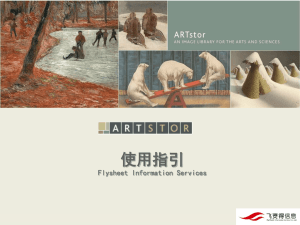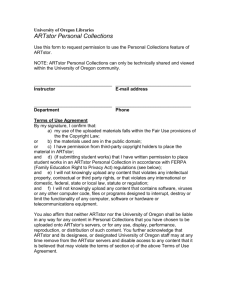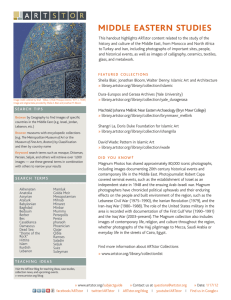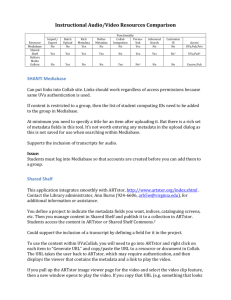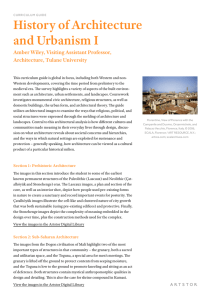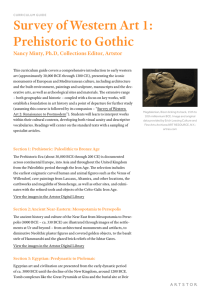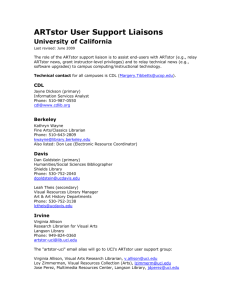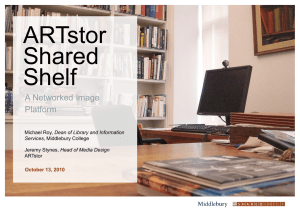William Ying
advertisement
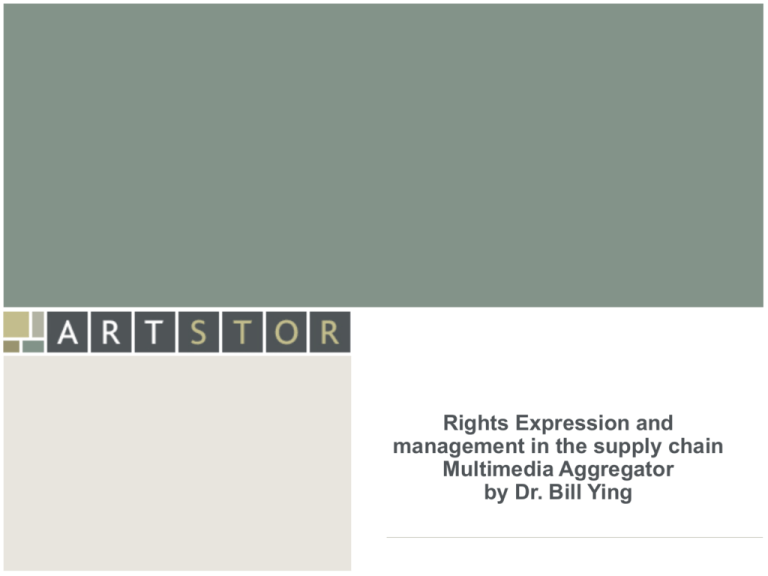
ArtSTOR Rights Expression and management in the supply chain Multimedia Aggregator by Dr. Bill Ying ArtSTOR What is ARTstor? A not-for-profit organization created by The Andrew W. Mellon Foundation that is developing a digital library of art images to enhance scholarship, teaching and learning in the arts and humanities – A primary resource: online Image collections and descriptive data – A scholarly and pedagogical resource: software tools to enable active use of content – A non-profit resource: solely for non-commercial educational and scholarly use ArtSTOR Overview of ARTstor Digital Library – What you can do with ARTstor • Search and Browse collections • Analyze images using zoom and pan • Save groups of images for personal use, group use or institution-wide access • Presentation / slide-show tools – What you will see in ARTstor • Digital images and descriptive data • Initial collections include art, architecture and archeology • Total number of images in charter collections: ~300,000 ArtSTOR ArtSTOR ArtSTOR ArtSTOR ArtSTOR ArtSTOR ArtSTOR ArtSTOR Overview of ARTstor’s Collections ArtSTOR The ARTstor Charter Collections: Research Objectives Work with a variety of content providers – Libraries, museums, photo archives, publishers, slide libraries Test a variety of approaches to building collections – Direct digital capture – Scanning photographic sources (transparencies, prints, slides) – Cost-benefit analysis Assess the user’s experience – What approaches work best for a variety of users, a variety of uses, in a variety of institutional settings? ArtSTOR The Image Gallery The connecting fabric of the ARTstor Library Ca 200,000 images, most made from color 35mm “copystand” slides Teaching gallery based on relatively representative undergraduate curricula Subset of 4,000 images based on key monuments illustrated in standard art history survey texts Item level cataloging records available for all images, with topical subject access Discourages redundancy and allows campuses to use limited resources judiciously Point of departure for a collaborative image and data enhancement program ArtSTOR The MoMA Architecture and Design Collection Example of a digital museum collection catalog 8,000 images from 6,200 objects Digitized via direct digital capture Extremely high resolution images ArtSTOR The Mellon International Dunhuang Archive Example of an archeological documentation project 40 caves out of several hundred Digitized via direct digital capture Extremely high resolution 3D virtual tours of the shrines Working with major institutions in US, UK and France to digitize versions of materials originally located at Dunhuang ArtSTOR The Illustrated Bartsch Example of a digital art reference work Ca 57,000 images of old master European prints, with rich cataloging and scholarly commentary Based on 100 volume authoritative print publication Digitized from 5x7 b/w prints ArtSTOR Schlesinger History of Women in American Collection This image has been made available by the Schlesinger Library, Radcliffe Institute, Harvard University solely for noncommercial educational and scholarly purposes. Your use of this image is restricted to those permitted uses specified in the ARTstor Digital Library Terms and Conditions of Use.To request permission for any other use, please contact the Schlesinger Library. ArtSTOR Institution collection A photographic collection of live insects from North and Central America License – based on Creative Commons http://creativecommons.org/licen ses/by-nc-sa/2.0/ ArtSTOR ArtSTOR Overview of ARTstor Interface and Tools Web-based interface accessible from www.artstor.org – User-Friendly system to support teaching and research • Search and Browse collections • Analyze images using zoom and pan • Save groups of images for personal use, group use or institution-wide access • Presentation / slide-show tools ArtSTOR Offline image viewer User want an offline client based image viewer so Professors can teach and present offline independent of Internet connectivity ArtSTOR ArtSTOR Some of ARTstor’s Challenges Building the ARTstor Digital Library – Managing a complex production process • Coordinating flow of images, text, and other resources from multiple sources and vendors • Absorbing collections with widely varying metadata structures and image quality • Working without universally accepted standards – Developing intuitive software tools to support a variety of uses Making the ARTstor Digital Library available and useful – Understanding ARTstor’s users and potential audience – Identifying where ARTstor ‘lands’ within an institution organizationally – Developing scalable solutions for interoperability, access & authorization – Implementing effective digital rights management and actionable rights expressions ArtSTOR Hierarchical Storage Management Systems Asset Metadata IP rights Management System Production Metadata Legal Data warehouse ARTstor public site User With Browser Offline client External System ArtSTOR Final Derivatives TIFF Image Production System Mgmt/QC data Hierarchical Storage Management Systems Online disk XML Export REL Near Line tape Central Repository ARTstor Collections Backup tape MARC Records Institution Collections EXCEL ACCESS Public Repository Intellectual Property Rights Systems ArtSTOR JSTOR Browser based Smart client XML Gateway www.artstor.org IBCLMS Proprietary API OAI XML Repository (ORACLE) Standard Repository API RLI API DSPACE FEDORA Blackboard, WebCT ENDNOTE Learning Mgmt System API (ZING SRW) Request/deliver Stable URL A&A UCB Scholar Box JMU MDID 2.0 Princeton Almagest ArtSTOR Interoperability: What we know ARTstor needs to be a centralized resource for the following reasons – To learn more about uses of digital images and users’ needs – To offer more interactive tools to those who want them – To create a regulated space for non-commercial use Users will almost certainly want to use ARTstor content and tools along with other digital image resources and software platforms Need to develop and implement a consistent expression and management of rights for all digital content in ARTstor
